We have already introduced you to CoolLaboratories MetalPad in our preview, and here you can read an in-depth crash test of the thermal conducting film.
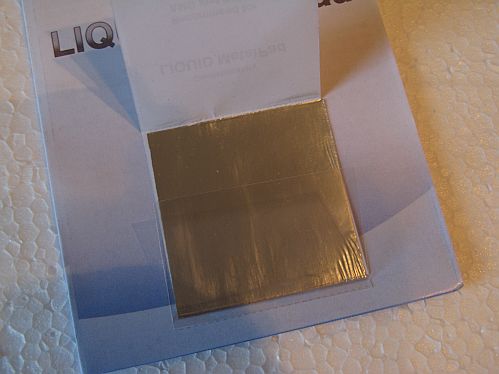
The film is a 38x38mm square, less than a millimetre thick. When applying to most of modern CPUs no modifications should be made to the pad, but when it comes to GPUs and graphical memory, you will have to cut the pad.
In our review we used three Metalpads to cover the CPU, GPU and graphics memory. We were interested how easily the film could be applied to the chips. Also, we wanted to find out how long does the burn-in process take, and in the end – evaluate the thermal performance of the film.
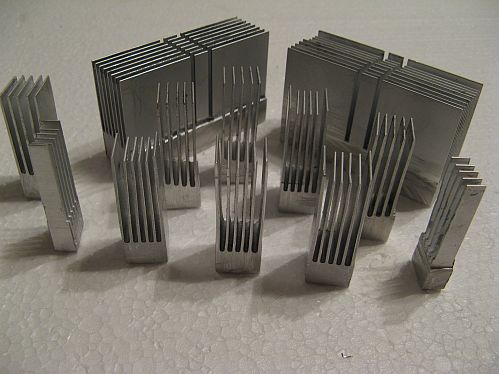
For this test we have cut a stock AMD cooler into smaller pieces. These smaller coolers will be placed on top of graphics memory chips.
The tools
Before working with the MetalPad, be sure that you have closed all doors in the room. The film is extremely light and very gentle. Of course, a clean table is a must.
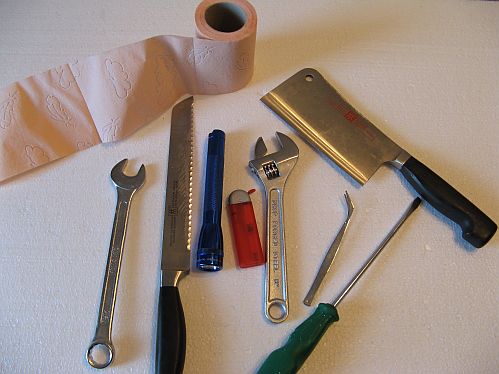
Here is most of the hardware we used. A sharp knife is also a must, and toilet paper is used to check if there are any leaks from the water cooling system.
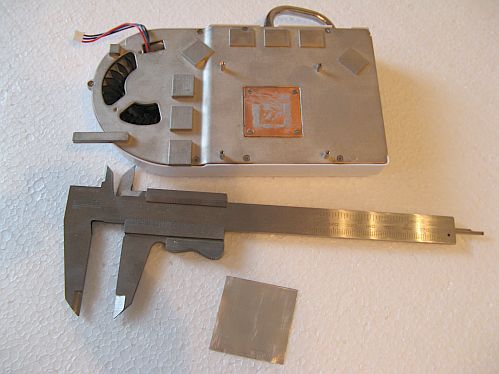
Before you start cutting, it is a good idea to take measurements.
After opening the package, you will find a manual and the film. We would recommend using tweezers when it comes to manipulating the film. Especially if a corner of the film bends, don't try to correct it with your fingers, because the folded part will surely fall of.
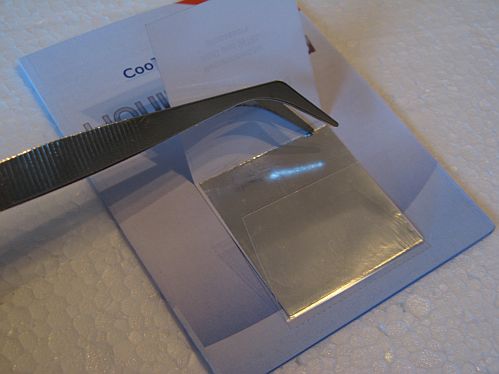
We wanted to use the film on our graphics card GPU and memory. Before we could apply it, we had to cut it.
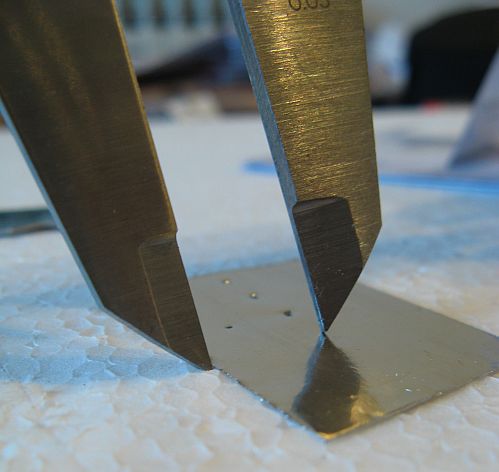
Try to use most of the surface – measure as precise as possible
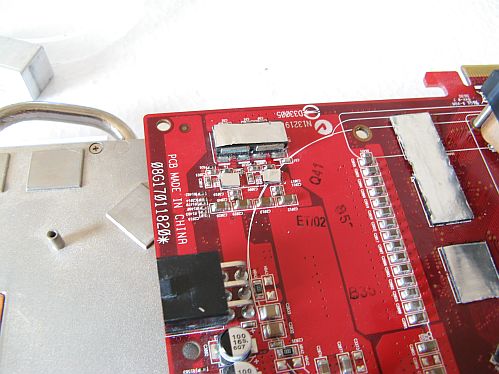
The biggest heater – the mosfet was a big problem. Because the film piece was very small, even breathing in the vicinity it blew it away.
Performance
The pad should liquefy itself at about 60 degrees centigrade. This process is called burn-in, and during it the liquefied film should fill all the gaps and irregularities on the memory chip and cooler surface. After the process, the film should become solid again, but now it should act like glue. This means that it should keep the cooler in place.
We have left the pads to burn-in for four days. Some of the cut parts have finished the process, some haven't even started.
The fastest burn-in was recorded on the X1950s GPU mosfet. It is well known that this chip exceeds temperatures of 120 degrees centigrade, and less that 20 minutes were enough to glue the cooler to the mosfet.
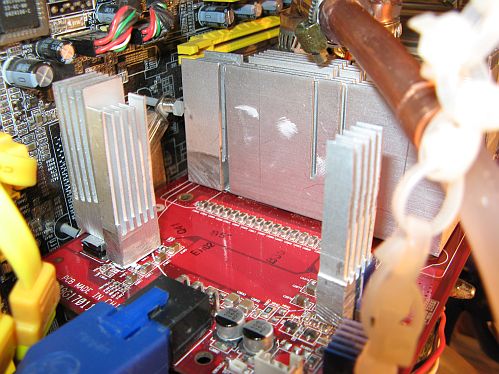
Cooling the mosfet on the X1950 series is the key to successful overclocking. Some of the smallest chips (voltage regulation) were a big trouble during installation, because the pads on them were extremely small. They would fly away even when you looked at them.
With our GPU we didn't have instant burn-in as with the mosfet. Nevertheless, the process finished in two days.
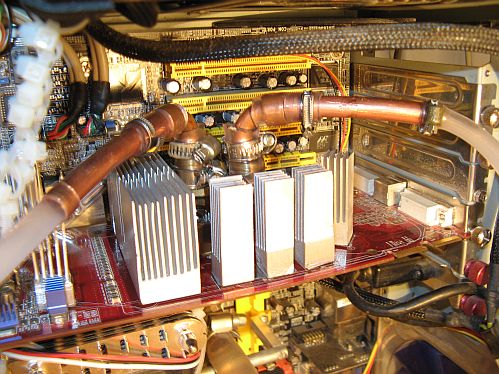
We turned off the fans to get higher temperatures during the first few days of burn-in process
We were a bit disappointed with the burn-in process on the graphics memory and our CPU. Unfortunately, even now the film looks the same. When we observe it with a magnifying glass, we can't see the anything engraved in the film. Usually, if the thermal pad is applied well, you should be able to see the memory model numbers engraved in it. We’re not sure what went wrong. The memory coolers are polished to make the surface completely flat, so we have ensured that each and every memory chip is in contact with the cooler.
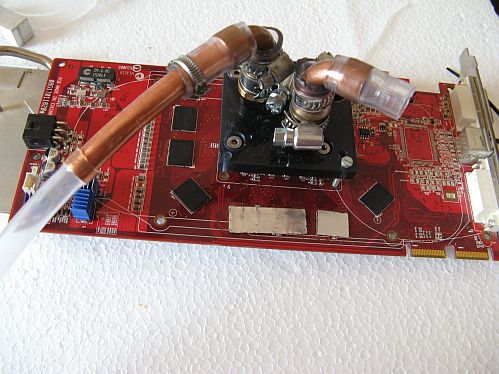
Unfortunately, we had burn-in problems on the RAM.
We had a similar problem with our CPU – the burn-in has slowly started yesterday, four days after we applied the film. Maybe the problem is in the temperature of the CPU. Only 25 degrees in idle and 31 at 100% load are maybe not enough for the pad to burn in quickly enough.
Conclusion
LiquidMetal is a great idea. No more grease on your hands, no more worries about dosing, and rather easy application are the biggest advantages over standard thermal compounds.
But, as we said, there are problems. You have to have a steady hand, and calm nerves. If something goes wrong you can't collect the remains and mix them up again as you could with standard grease. Its main advantage can become its greatest disadvantage for impatient users.
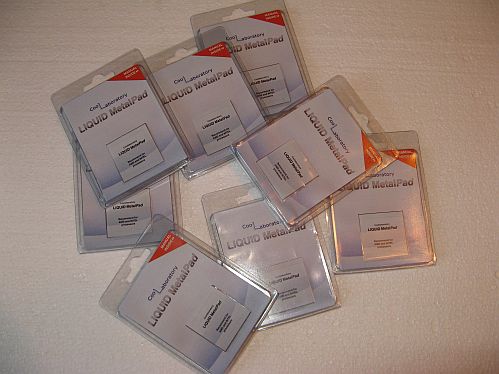
When compared it to a Nanotherm PCM blue (which had only 24 hours for burn-in), we can say that the ThermalPad performs a little bit better. The GPUs temperature was 2 degrees lower when the film was used. This is not a big difference, especially if you know that today the air temperature is 1 degree lower than yesterday when we were testing MetalPad.
Nevertheless, MetalPad is a great product, and we can surely recommend it. The recommended price is about €4,99 (if bought in a one pad package).
CoolLaboratories has a list of resellers here.
Big thanks to Innovatek for giving us the LiquiPads, and an EHEIM pump. Without your help, this test wouldn't be possible.

